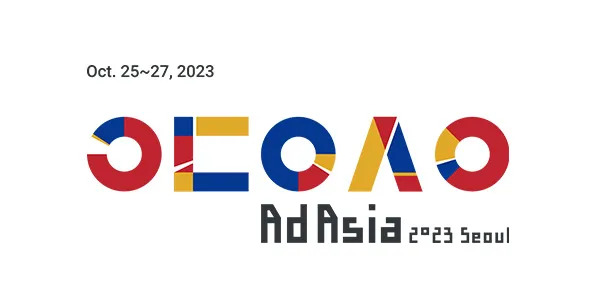By Iris Yim
Over the past three weeks, I have had the opportunity to attend three conferences in marketing and adverting in different parts of the world and observed different reactions and approaches to integrating AI in the creative industry.
The ANA Multicultural Marketing Conference in Las Vegas (Week of 10/09)
The journey began in Las Vegas at the ANA Multicultural Marketing Conference. Here, I had the privilege of attending an inspiring keynote speech by Ann Mukherjee, the CEO of Pernod Ricard. The conference was a melting pot of incredible case studies and discussions on the vital topics of Diversity, Equity, Inclusion, and Belonging (DEIB). However, it was surprising to find that there were no sessions specifically focused on AI. The AIMM member forum, held just before the conference, featured a solitary AI session, highlighting the need for a deeper exploration of this emerging technology in the marketing landscape.
Advertising Week in New York (Week of 10/16)
Next, I found myself in New York, where Advertising Week had a different tale to tell. This conference was a deep dive into the world of AI. It featured a plethora of case studies and panel discussions on the integration of AI into advertising technology. The spotlight was on optimizing the ad buying process and enhancing performance through AI. However, the creative aspects of AI remained relatively unexplored.
Ad Asia in Seoul (Week of 10/23)
The final leg of my journey took me to Seoul, South Korea, for Ad Asia. Here, everything crystalized. The speakers from across the globe presented their visions of AI’s influence on various facets of marketing and advertising, encompassing both ad tech and creativity. The presentations covered topics ranging from technology giants like Google, Facebook, and Naver integrating AI into their products to the future of advertising in the AI era, humanizing brands through creativity, DEI campaigns, the global K-wave phenomenon, and the latest consumer trends in digital advertising, particularly in China.
The Changing Face of Branding
I also observed an interesting dichotomy and thought-provoking debate revolving around the very essence of branding in the AI era.
There are presentations that focus on traditional branding, appealing to humanity and emotions – by Yoshihiro Yagi, Dentsu, Inc., Executive Creative Director, and Brand in Action – Advertising that Changes Society by Josy Paul, BBDO India.

Japan Railway Group – My Japan Railway (case study) Industry Craft Grand Prix at Cannes Lions 2023

In contrast, there were arguments that questioned whether a single brand voice and messaging still hold relevance in the age of digital advertising.
Xiaodong Zheng, CEO of LEO Digital Network, challenged the traditional concept of branding. In this digital era, branding with a single voice no longer aligns with the dynamics of advertising. The integration of media, social platforms, and e-commerce has fundamentally altered the way consumers interact with brands. Consumers no longer have to go through the phase of product search. Algorithms now serve products and content tailored to individual preferences and needs. This shift blurs the lines of traditional branding, paving the way for a more fluid, responsive, and dynamic approach.

Presentation slide by Xiaodong Zheng, CEO of LEO Digital Network at Ad Asia 2023
Today, digital platforms like Xiaohongshu (often compared to Instagram) provide intriguing insights into the evolving landscape of branding. The absence of traditional ads on Xiaohongshu is notable. Instead, micro-influencers promote products through shoppable videos, creating a highly relevant yet transactional environment. Here, there is no single, enduring brand personality. This raises questions about the evolving meaning of branding in an AI-driven, Web 3.0 world of digital advertising.
To completely do away with branding is a bit extreme. Branding is more important than ever in today’s fragmented media landscape where there is a cacophony of different voices. But we do need to consider the balance between maintaining brand identity and catering to the personalized, algorithm-driven world of advertising. As Josy Paul emphasized, content is king, but context is “king kong.” Effective messaging must align seamlessly with its context to be memorable and engaging. One approach is custom ads embedded within popular shows, creating a harmonious viewer experience. A good example of this is custom advertisements within popular shows as illustrated by China’s Untamed, where the endorsement of products by beloved characters resonates more deeply with viewers versus some random ad interrupting the viewing and worse as I frequently see on YouTube, an English ad of a completely random product/category popping up in the middle of a Chinese drama. This would normallyy be a very expensive and laborious process. But with the help of AI, all of a sudden, this is plausible.


The Future of Advertising at the Dawn of a New Era
AI’s capabilities are awe-inspiring, capable of outperforming human ingenuity. This is evident in competitions such as the one between Wharton School MBA students and ChatGPT-4, where AI-generated ideas excelled in both quality and quantity.
Despite the myriad questions surrounding creativity, branding, and advertising in the AI era, there is a sense of optimism at Ad Asia. As John Jonghyun Kim, CEO of Cheil Worldwide, highlighted, this tool can supercharge creativity, as demonstrated by AI-generated art, such as Jason M. Allen’s Théâtre D’opéra Spatial. It’s true that the image was generated by AI. But Jason also spent 80 hours on 624 prompts to create the image.

Image: Théâtre D’opéra Spatial — Jason M. Allen
Asia Leading the Way in AI and Digital Advertising
Regardless of how you feel about AI, one thing is clear: Asia is positioned to lead the AI and digital advertising revolution. In the past decade, the region has pioneered new technologies and marketing approaches, from mobile payment innovations to live-streaming sales and short-form video content. Technologies like TikTok, driven by advanced algorithms, have achieved immense success. The region’s commitment to technology, data-driven insights and continuous improvement underscores its influence on the global advertising landscape.
I wholeheartedly recommend participating in Ad Asia and global advertising conferences. Learning from the technological innovators and marketing leaders from around the world can broaden horizons, ignite fresh ideas, and foster collaborative opportunities.

